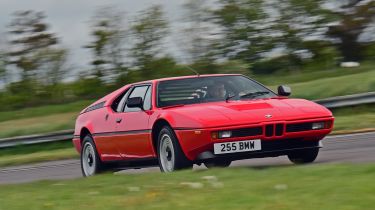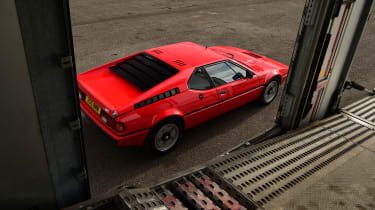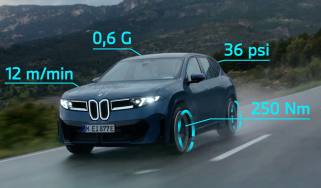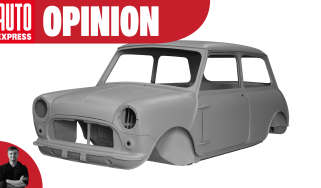BMW M1 - Best BMW M cars
The M1 was a racing supercar for the road, and still sets pulses racing today
Designed by Giugiaro and conceived initially as a joint venture between BMW and Lamborghini, the M1 – just like the 3.0 CSL – was meant to be a racing car to begin with. But for various reasons the motorsport project and the partnership with Sant’Agata faltered, which left BMW with what would turn out to be a rather nice problem to have: what to do with its new mid-engined racing car that looked great and was powered by a brand-new, Paul Rosche-designed, 3.5-litre straight-six engine? Perhaps the company should put number plates on it and see whether anyone wants to use it on the road, someone with foresight in Munich eventually asked.
In total a mere 453 road-going M1s were made between 1978 and 1981 – each with a list price of £30,000 (you could buy a house for a lot less than that in 1978), all of them were left-hand drive, carrying the official model designation of E26. The M1 didn’t sell terribly well, mainly because it didn’t carry much credence with the sort of punters who wanted ‘a real Italian supercar’ to be seen in, not one from Germany that had been made by BMW.
Yet in the end the M1 would go on to form the basis for the entire M division’s legacy, all on its own to begin with. For Munich’s bean-counters, even though they didn’t know it at the time, it really was the golden ticket.
What’s the BMW M1 like to drive?
Steve Sutcliffe tries it out on track
Back then it must have felt like an incredible, cutting-edge car, because even today the M1 still seems surprisingly sharp and rapid to drive. It weighs only 1,300kg, so although the straight-six has a mere 277bhp, it still goes hard enough, still sounds authentic, and most of all it still feels precise and clean in its responses. Even the five-speed dogleg (first) gearchange is pleasingly slick once you acclimatise to it, which is not something that can be said for any of the M1’s theoretically more desirable Italian supercar rivals of the same era.
The driving position and entire cockpit design are pure mid-engined, in that you sit a long way forward – to a point where you quickly become acutely aware that most of the car’s innards, and mass, sit well behind you. The design inside is simple, functional, clean and neat. It works, even if it doesn’t exactly make your heart skip a beat with joy aesthetically. There are few frills inside the M1, but all the basics are spot on, and I rather like it because of that.
It doesn’t make an especially spine-tingling sound, and in this example the throttle response is a bit fluffy. But the steering, chassis and brakes are all way better than I expected – this is the first time I’ve driven an M1 – and the way it behaves, generally, is extraordinary. Even in 2022.
No, it doesn’t ignite your emotions like a Countach might have done back in the day, but there’s a purity of purpose to the M1, not to mention a quality of build and engineering that was often absent from its Italian rivals in the seventies.
Cards on the table, I was amazed by how relatively modern and, yes, not rubbish the M1 was to drive (and drive quite hard) around our track at Llandow – to a point where, yes, I really do understand why this example is insured for £450,000. In logical terms it’s simply worth that much as a car, and that’s before you even begin to think about the historical importance it also carries.
BMW M1 specs and prices
- Price new – £30,000
- Value now – £450,000
- Production: 453 (1978-1981)
- Power/torque: 277bhp/330Nm
- 0-62mph: 5.6 seconds
- Top speed: 162mph
- Gearbox: Five-speed manual
- Weight: 1,300kg









